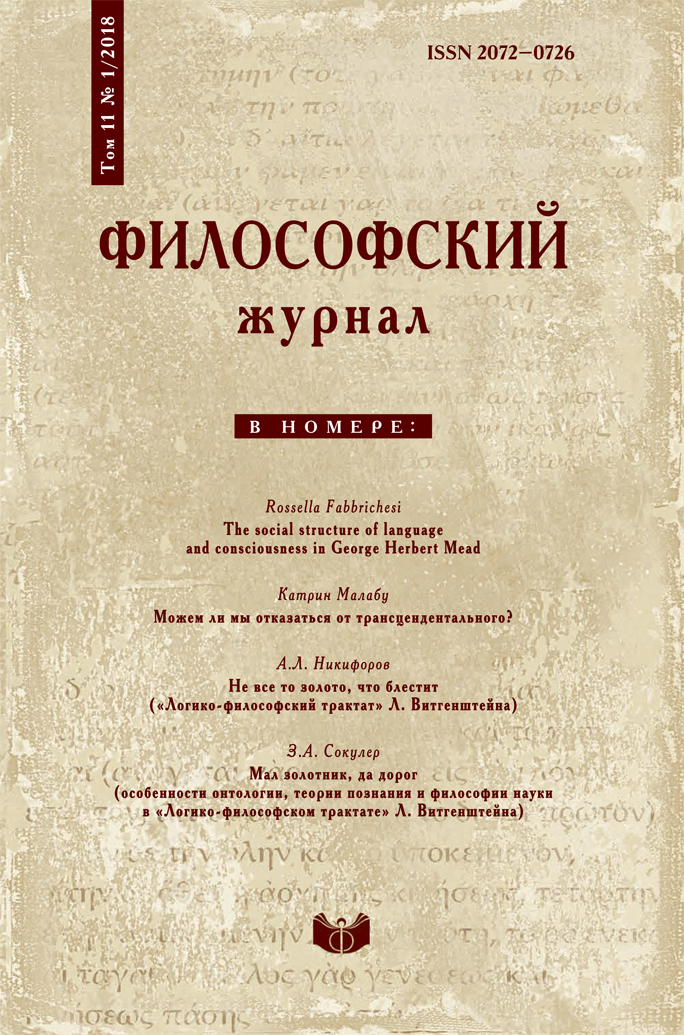The social structure of language and consciousness in George Herbert Mead
DOI:
https://doi.org/10.21146/2072-0726-2018-11-1-45-61Keywords:
Mead, Vygotsky, consciousness, gestures, symbols, language, communicationAbstract
This essay focuses on George H. Mead’s Mind, Self, and Society (1934). In his seminal work, Mead gives birth to social psychology, differentiating it from pure behaviorism. Mead focuses on an observable activity – the gesture, the act – and yet he distances himself from behaviorism because he does not deny the inner experience of the individual. On the contrary, he is particularly concerned with the rise of inner experience within the process as a whole. The process of the formation of consciousness works from the outside to the inside. Consciousness is mostly to be explained, not to be certified; what must be explained is its development, its function, its usefulness. Mead maintained that consciousness has a social origin (like his contemporary Vygotsky), and that it is the outcome, and not the origin, of the process of communication (like Darwin). This process begins with a “conversation of gestures”, continues with what Mead calls “taking the role of the other”, and ends up with a social architecture of significant symbols. The Self appears as a Social Self, a Generalized Other made possible especially by that particular form of gesture that is the vocal gesture. I will insist on the particular form of “genealogy of consciousness” that Mead underlined, trying to clear up its novelty in reference to the metaphysical and psychological tradition. The inward-looking individual seems to fail to see his proper Self, because the truth of the Self lies in the outward and dynamical relations with others.






